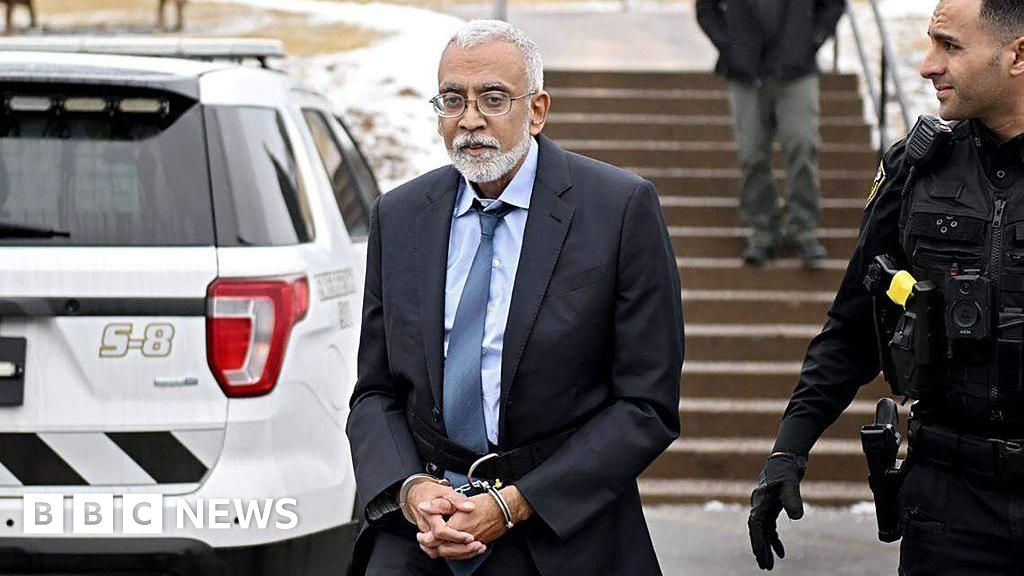United States immigration authorities are moving to dramatically expand their social media surveillance, with plans to hire nearly 30 contractors to sift through posts, photos, and messages—raw material to be transformed into intelligence for deportation raids and arrests.
Federal contracting records reviewed by WIRED show that the agency is seeking private vendors to run a multiyear surveillance program out of two of its little-known targeting centers. The program envisions stationing nearly 30 private analysts at Immigration and Customs Enforcement facilities in Vermont and Southern California. Their job: Scour Facebook, TikTok, Instagram, YouTube, and other platforms, converting posts and profiles into fresh leads for enforcement raids.
The initiative is still at the request-for-information stage, a step agencies use to gauge interest from contractors before an official bidding process. But draft planning documents show the scheme is ambitious: ICE wants a contractor capable of staffing the centers around the clock, constantly processing cases on tight deadlines, and supplying the agency with the latest and greatest subscription-based surveillance software.
The facilities at the heart of this plan are two of ICE’s three targeting centers, responsible for producing leads that feed directly into the agency’s enforcement operations. The National Criminal Analysis and Targeting Center sits in Williston, Vermont. It handles cases across much of the eastern US. The Pacific Enforcement Response Center, based in Santa Ana, California, oversees the western region and is designed to run 24 hours a day, seven days a week.
Internal planning documents show that each site would be staffed with a mix of senior analysts, shift leads, and rank-and-file researchers. Vermont would see a team of a dozen contractors, including a program manager and 10 analysts. California would host a larger, nonstop watch floor with 16 staff. At all times, at least one senior analyst and three researchers would be on duty at the Santa Ana site.
Together, these teams would operate as intelligence arms of ICE’s Enforcement and Removal Operations division. They will receive tips and incoming cases, research individuals online, and package the results into dossiers that could be used by field offices to plan arrests.
The scope of information contractors are expected to collect is broad. Draft instructions specify open-source intelligence: public posts, photos, and messages on platforms from Facebook to Reddit to TikTok. Analysts may also be tasked with checking more obscure or foreign-based sites, such as Russia’s VKontakte.
They would also be armed with powerful commercial databases such as LexisNexis Accurint and Thomson Reuters CLEAR, which knit together property records, phone bills, utilities, vehicle registrations, and other personal details into searchable files.
The plan calls for strict turnaround times. Urgent cases, such as suspected national security threats or people on ICE’s Top Ten Most Wanted list, must be researched within 30 minutes. High-priority cases get one hour; lower-priority leads must be completed within the workday. ICE expects at least three-quarters of all cases to meet those deadlines, with top contractors hitting closer to 95 percent.
The plan goes beyond staffing. ICE also wants algorithms, asking contractors to spell out how they might weave artificial intelligence into the hunt—a solicitation that mirrors other recent proposals. The agency has also set aside more than a million dollars a year to arm analysts with the latest surveillance tools.
ICE did not immediately respond to a request for comment.
Earlier this year, The Intercept revealed that ICE had floated plans for a system that could automatically scan social media for “negative sentiment” toward the agency and flag users thought to show a “proclivity for violence.” Procurement records previously reviewed by 404 Media identified software used by the agency to build dossiers on flagged individuals, compiling personal details, family links, and even using facial recognition to connect images across the web. Observers warned it was unclear how such technology could distinguish genuine threats from political speech.
ICE’s main investigative database, built by Palantir Technologies, already uses algorithmic analysis to filter huge populations and generate leads. The new contract would funnel fresh social media and open-source inputs directly into that system, further automating the process.
Planning documents say some restrictions are necessary to head off abuse. Contractors are barred from creating fake profiles, interacting with people online, or storing personal data on their own networks. All analysis must remain on ICE servers. Past experience, however, shows such guardrails can be flimsy, honored more in paperwork than in practice. Other documents obtained by 404 Media this summer revealed that police in Medford, Oregon, performed license plate reader searches for ICE’s Homeland Security Investigations division, while HSI agents later ran searches in federal databases at the request of local police—an informal back-and=forth that effectively gave ICE access to tools it wasn’t authorized to use.
Other surveillance contracts have raised similar alarms. In September 2024, ICE signed a $2 million contract with Paragon, an Israeli spyware company whose flagship product, Graphite, can allegedly remotely hack messaging apps like WhatsApp and Signal. The Biden White House quickly froze the deal under an executive order restricting spyware use, but ICE reactivated it in August 2025 under the Trump administration. Last month, 404 Media filed a freedom of information lawsuit demanding ICE release the contract and related records, citing widespread concern that the tool could be used to target immigrants, journalists, and activists.
The Electronic Privacy Information Center has similarly sued ICE, calling its reliance on data brokers a “significant threat to privacy and liberty.” The American Civil Liberties Union has argued that buying bulk datasets—such as smartphone location trails gathered from ordinary apps—helps ICE sidestep warrant requirements and helps it pull in vast amounts of data with no clear link to its enforcement mandate.
The newly proposed social media program is only the latest in a string of surveillance contracts ICE has pursued over the past few years.
In 2020 and 2021, ICE bought access to ShadowDragon’s SocialNet, a tool that aggregates data from more than 200 social networks and services into searchable maps of a person’s connections. Around the same time, the agency contracted with Babel Street for Locate X, which supplies location histories from ordinary smartphone apps, letting investigators reconstruct people’s movements without a warrant. ICE also adopted LexisNexis Accurint, used by agents to look up addresses, vehicles, and associates, though the scale of spending on that service is unclear. In September, ICE signed a multimillion-dollar contract with Clearview AI, a facial recognition company that built its database by scraping billions of images from social media and the public web.
Throughout, ICE has leaned on Palantir’s Investigative Case Management system to combine disparate streams of data into a single investigative platform. Recent contract updates show the system lets agents search people using hundreds of categories, from immigration status and country of origin to scars, tattoos, and license-plate reader data. Each surveillance contract ICE signs adds another layer—location trails, social networks, financial records, biometric identifiers—feeding into Palantir’s hub. ICE’s new initiative is about scaling up the human side of the equation, stationing analysts around the clock to convert the firehose of data into raid-ready leads.
ICE argues it needs these tools to modernize enforcement. Its planning documents note that “previous approaches … which have not incorporated open web sources and social media information, have had limited success.” The agency suggests that tapping social media and open web data helps identify aliases, track movements, and detect patterns that traditional methods often miss.
With plenty of historical analogs to choose from, privacy advocates warn that any surveillance that starts as a method of capturing immigrants could soon be deployed for ulterior purposes. ICE’s proposal to track “negative sentiment” is a clear example of how the agency’s threat monitoring bleeds into the policing of dissent. By drawing in the online activity of not only its targets but also friends, family, and community members, ICE is certain to collect far more information outside its mandate than it is likely to publicly concede.









